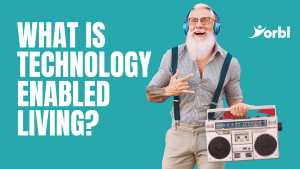There’s no question that regular physical activity can be beneficial for a myriad of reasons ranging from reduced risk of certain diseases to improved mental health and mood. But for older adults specifically, exercise can play an essential part in mitigating some of the risks associated with aging, and improve quality of life on several different levels.
What are the benefits of exercise for older adults?
The physical benefits of regular exercise sessions are clear. According to the National Institutes of Health (NIH), exercise can help reduce the risk of heart disease, manage blood sugar and insulin levels, and strengthen bones and muscles, which is especially valuable for adults as they age. “It can help seniors with strength,” says One Medical provider Rakesh “Rocky” Patel, MD. “This allows for seniors to stay independent. In addition, preservation of muscle can help prevent injury from falls and help maintain bone density to prevent fractures. Regular physical activity may also reduce pain from arthritis. Regular aerobic activity can help maintain heart health and can reduce risk of death from heart disease and cancer.”
But the benefits of exercise go beyond the physical. Regular workouts have been shown to trigger the release of certain chemicals that help boost mood, promote relaxation, and reduce stress — all of which can help reduce the risk of mental health conditions like depression. “Some of the biggest mental benefits include better energy, cognitive functioning, and improved mood,” Patel says. “It can give a better sense of well-being and help with depression and anxiety.” And as a new study found, walking specifically was found to improve memory.
How much exercise should older adults be getting?
According to the U.S. Department of Health and Human Services, 150 minutes a week of moderate-intensity aerobic activity (think: walking, dancing, swimming, raking leaves, etc.) is a solid goal. “A 10-15 minute walk after a meal is a great place to start,” Patel says. In addition, incorporating two days of muscle strengthening activities — using items like light dumbbells, resistance bands, or even filled water bottles — and sprinkling in balancing exercises throughout the week can go a long way in improving overall health. “Beginners can start at home with bodyweight exercises,” Patel says.
Tips for staying active as you age
If those goals sound ambitious, take heart: setting small, reasonable goals is the best way to stay consistent and reap the benefits. “Most importantly, start off slow,” Patel says. “Biting off more than you can handle can lead to injury and may not be a fun experience.” Here are Patel’s best tips for those seeking ways to stay active as they get older:
1. Find an activity you enjoy or that you can do with a friend or spouse
Research indicates that having an exercise companion is a great way to ensure you’ll look forward to your workouts and actually follow through with them. Even in the absence of a workout buddy, there are ways to increase the likelihood that you’ll stick with a regimen: studies have shown that engaging in physical activities you actually like and look forward to are essential for long-term commitment. If long walks aren’t your thing, consider looking into fitness classes for seniors or finding beginner yoga workouts online that you can try at home.
2. Look for an activities that are low-impact to help prevent injury
Low-impact activities like walking, yoga, pilates, tai chi, etc. may be less strenuous and intense than high-impact exercises like running and gymnastics, but that doesn’t mean they’re not effective for overall health. In fact, regular low-impact workouts can help build strength and flexibility while reducing the risk of injury associated with higher impact exercises. Research has shown that low-intensity exercise can effectively improve physical and cognitive health for older adults and can be modified for a range of levels.
3. Make it a habit and priority
Even if you have the best of intentions, it can be hard to follow through or hit your goals if you’re not putting them on your calendar or treating them like non-negotiable appointments. “Making a plan can help make it a sustainable behavior,” Patel says. Try adding exercise blocks in your daily planner or phone calendar or make workout dates with friends so you stay on track.
4. Be sensible about exercise and take time off if you are ill or have soreness/injury
While it may be tempting to switch up your whole routine and go from sedentary to super active once you know all the benefits of regular exercise, it’s essential to take breaks and listen to your body. Modify workouts if you need to. “Be consistent, but don’t beat yourself up if you miss for a few days,” Patel says. “Just get back on your schedule.” It’s also a great idea to check in with your primary care provider and share your workout goals with them so they can help create a customized plan that’s sustainable, safe, and right for you.
5. Don’t be afraid to workout at home
An active lifestyle doesn’t have to include a specific environment or set of accessories. “You do not need an expensive gym membership or equipment,” Patel says. Getting active can be as simple as walking out the front door and going for a stroll around the neighborhood or finding a YouTube routine designed specifically for seniors — no pricey entry fee required.
Full Credit: By Michelle Konstantinovsky – https://www.onemedical.com/blog/healthy-living/5-ways-stay-active-you-age/


